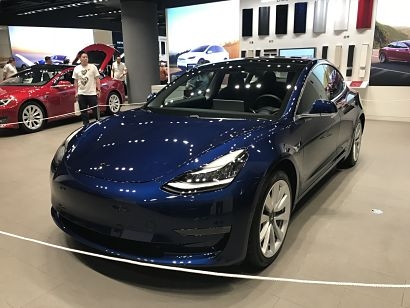
BEVs continued to gain traction in markets like Norway, where they counted for 40 percent of overall registrations, and the Netherlands, where they counted for 7 percent. Demand also increased by 81 percent in Germany, which was the largest market for BEVs in February.
This increase can be explained by the introduction of new models – most notably the Tesla Model 3. The hotly anticipated car excelled during its first full month on the European market and became the best-selling BEV. The Model 3 quickly outsold other big players like the Nissan Leaf and Renault Zoe, despite being more expensive and only available for a short amount of time. Felipe Munoz, JATO’s global analyst, commented that the performance of the Model 3 is remarkable, given that this kind of result is not normally seen until four or five months after a new car has hit the roads.
It’s also notable that most of the Model 3’s volume in February came from private registrations, which breaks the usual trend of a new vehicle’s volume being made up of business/fleet registrations. But even more remarkably, the Tesla Model 3 achieved another record in February, as it became the top-selling premium midsize sedan in Europe – outperforming the popular Mercedes C-Class, Audi A4 and BMW 3-Series.
“As we’re seeing in the US, Tesla is also shaking up the European market” said Mr Munoz. “Its long-lasting impact will depend on how quickly the German premium makers, Volvo and JLR react to the arrival of the Model 3 to Europe and how quickly they can bring in their own midsize electric cars”.
In Norway, nearly twice as many zero-emission cars were sold than in February 2018 with Denmark also recording a strong result, seeing an 8 percent increase in volume due to EV and PHEV registrations.
The rising popularity contrasts with the European car market more generally, which registered its sixth consecutive month of decline in February 2019, the only growth segment being SUVs, vans and sports cars.
For additional information:

